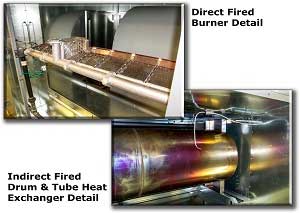5 Tips to Win the Bid on Shooting Range Ventilation Projects
There are 16,000 to 18,000 indoor shooting ranges in the U.S. These facilities are used for training by police and military personnel and for recreational target shooting by civilians. In fact, the growing popularity of target shooting as a recreational activity is growing the number of shooting ranges nationwide, especially indoor ranges which can be used year-round in any climate. Providing HVAC services to these indoor facilities is a great opportunity for commercial HVAC contractors, however, it is also a unique challenge.

If you’d like to take a shot at bagging a contract for HVAC systems on a new or existing shooting range, you’d be wise to do some homework. Ventilation for these types of facilities is both critical and a bit complicated. Here are some tips on winning the bid:
1. Know why proper ventilation matters in a shooting range. Proper ventilation of indoor shooting ranges is a critical component of their operation, because without proper ventilation, users can be exposed to dangerous levels of lead.
The two main reasons for installing a ventilation system in an indoor range are to protect employees and shooters from the hazards of vaporized lead and powder, and to eliminate smoke so that shooters can see the target.
2. Know the two types of ventilation systems used in shooting ranges and consider the local climate. A straight-through system brings outside air into the front of the range, passes it through the range and exhausts it out the back. The air travels “straight through” the range.
The second type of system re-circulates a large percentage of air through the range multiple times, while a small amount of the air is continuously exhausted. Outside air makes up for exhausted air. Re-circulating systems are used for shooting ranges in climates where significant heating or cooling is required.
Local climate generally determines which ventilation system should be used. A re-circulating system is more expensive to install, operate and maintain, but there are significant energy savings. In areas where limited heating or cooling is necessary, either system can work.
3. Know what type of shooting will be done at the range. Before you can design a ventilation system, you need to know the type of shooting that will occur. A small-bore rifle range will have different requirements than a high-power range. The rate of fire is also important. Ask if the range will host competitions and therefore have to meet specific requirements? Will the range allow semiautomatic firearms or fully automatic firearms?
Some of the answers to these questions will also affect the maintenance required on the ventilation system. You may want to include information on the required frequency of filter changes and other regular maintenance in the bid so the shooting range operator won’t get any surprises down the road.
4. Be familiar with OSHA and EPA requirements. Designing a system that does not meet requirements could be an expensive mistake.
Here are just a few of the Lead Exposure and Indoor Range Considerations published by the National Institute for Occupational Safety and Health*:
- An optimum air supply would be 75 fpm at the firing line. The minimum air supply must be 50 fpm at the firing line.
- Filtered and conditioned air must be introduced behind the firing line to guarantee an evenly distributed flow of air through the shooting positions.
- Supplied air inlets should be placed approximately 15 feet behind the shooters position.
- The entire range facility should be maintained at a slightly negative pressure with respect to adjacent areas to prevent the escape of contaminants. This criteria suggests that exhaust air should exceed supplied air by 10%.
- For maximum efficiency, exhaust ducts should be located behind and at the apex of the bullet trap. An alternative location is to place the exhaust ducts on the side walls slightly in front of the apex of the trap.
- A minimum down range conveying velocity of 35 fpm must be maintained.
- When the 75 fpm rate is used, a minimum of 25% of the air should be exhausted 15-20 feet down range of shooting position and the remaining 75% at the bullet trap.
- When the 50 fpm rate is used, 100% of the air should be exhausted down range at the bullet trap.
- Each range should have its own ventilation system to prevent the circulation of contaminated air to other areas of the building.
- The supply and exhaust systems must be electrically interlocked, thereby eliminating the error of turning one system on and not the other.
- All air being exhausted or re-circulated from the range should be filtered using a High Efficiency Particulate Filter (HEPA) or equivalent.
5. Be safe. If you are going to be spending time at shooting ranges doing research before you bid or performing maintenance on a regular basis after you win the contract, you must consider your own safety and that of your employees. Be sure they wear proper hearing protection and are protected from lead dust and fumes.





